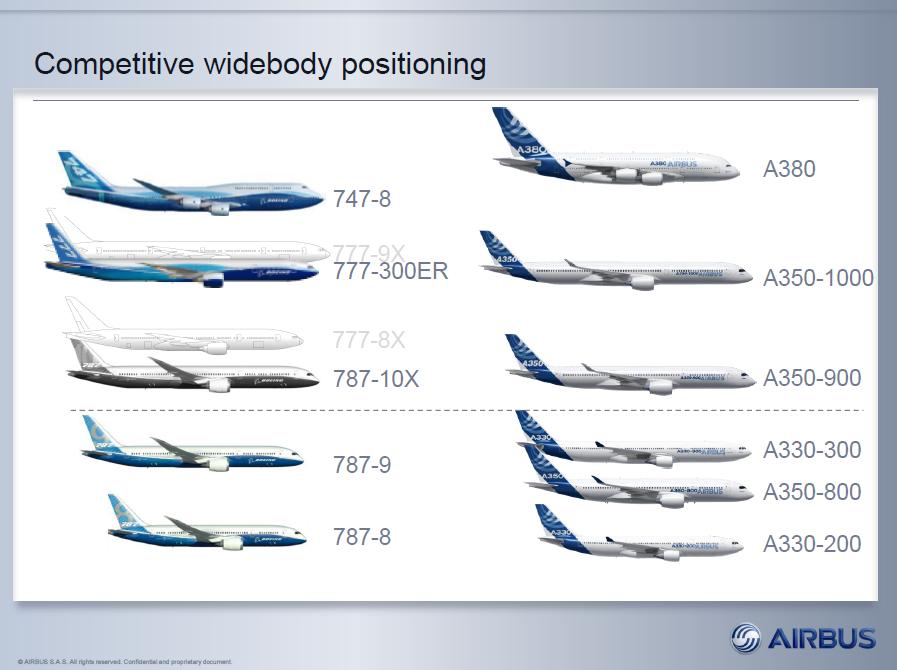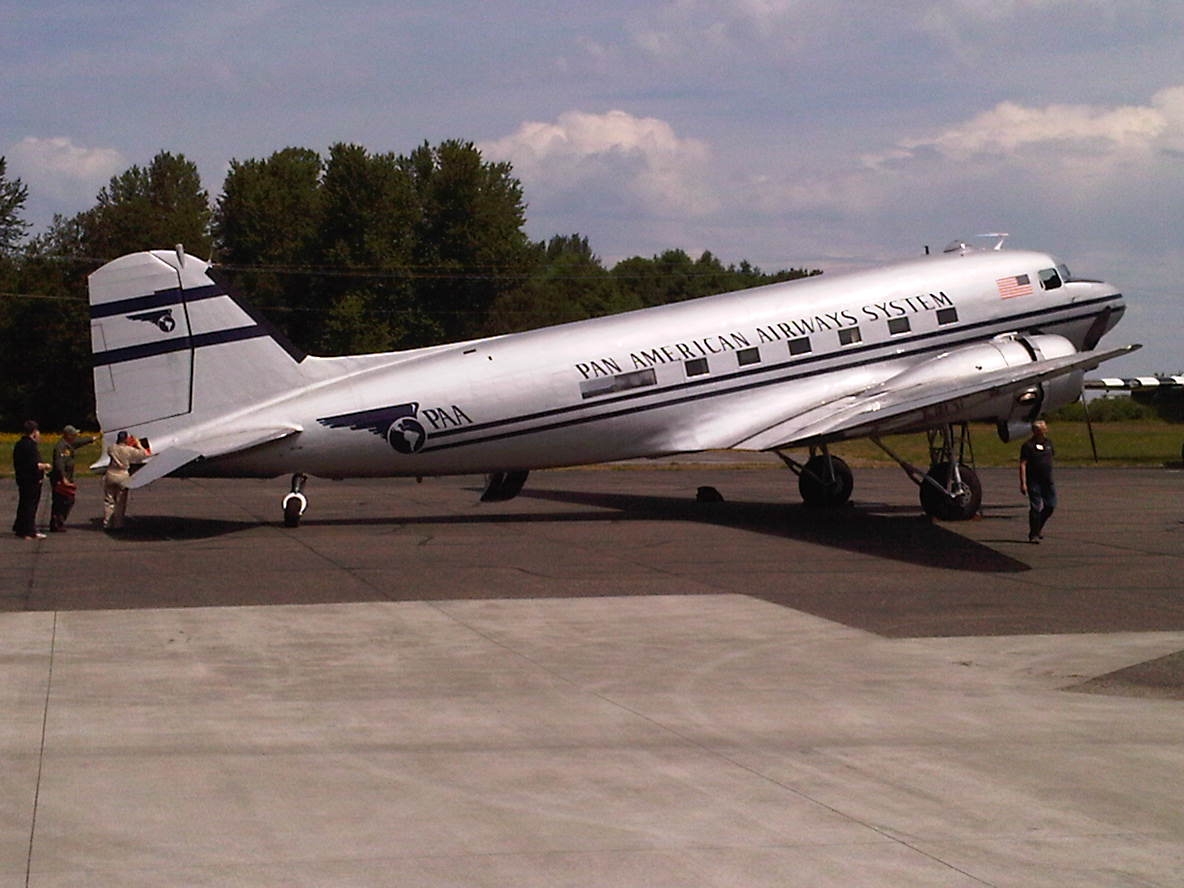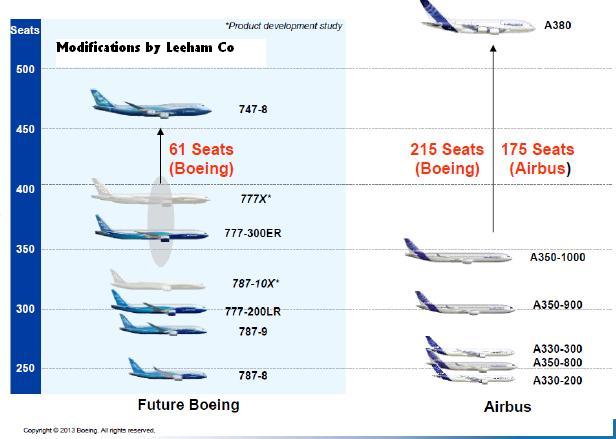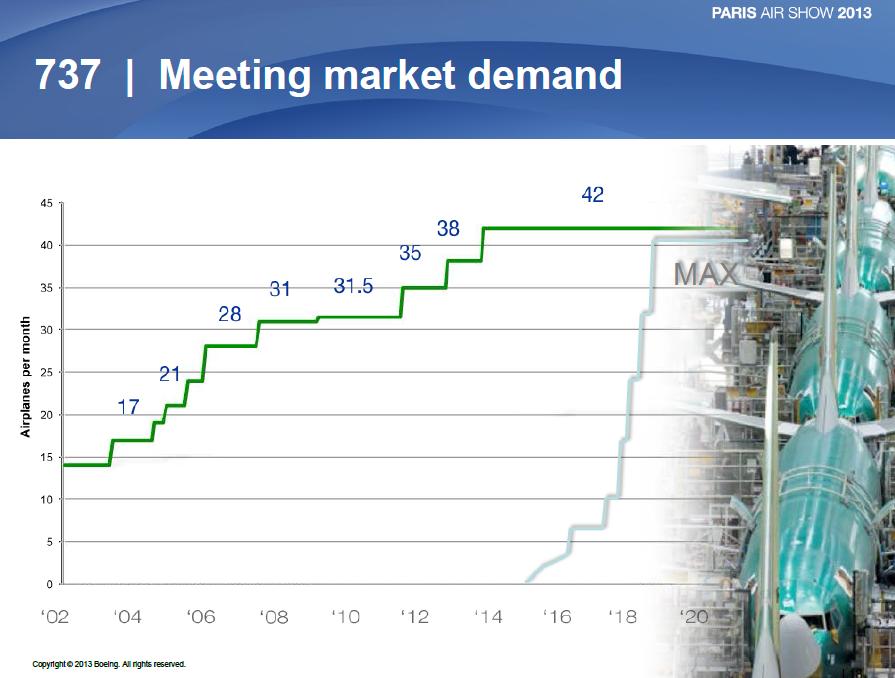Leeham News and Analysis
There's more to real news than a news release.
Not from the Paris Air Show: Move Over; riding in a DC-3
In a week dominated by Paris Air Show news, we have a couple of unrelated items.
We saw this car in a parking lot and couldn’t resist taking a picture. Note the writing on the windshield and how it would be legible in your review mirror as the car comes up behind you.
And then back to aviation, we took a ride in the ex-Pan Am DC-3 over the weekend. It’s owned by the Historic Flight Foundation in Everett (WA).
Photo by Scott Hamilton
Photo by Scott Hamilton
“One Boeing” leads way for P-8, KC-46A; 767-2C commercial order seen
“One Boeing” is the strategy that blends all the company enterprises–Boeing Commercial, Boeing Defense, Boeing Commercial Aviation Services and other business units into a single set of resources rather than operating as solo businesses.
The P-8A Poseidon program is just such a blend. Using the commercial 737-800 as the platform with the 737-900ER wing, Commercial and Defense integrate the technologies of the two units and assemble the P-8A in what is actually the third 737 production line.
The US Navy has plans to acquire 117 P-8As to replacing the Eisenhower-era Lockheed P-3 Orion. The P-3 and the P-8 has a primary mission of anti-submarine patrol but the airplanes are increasingly being used for maritime patrol in a variety of countries for fisheries, immigration and more recently anti-piracy surveillance.
India ordered eight. Boeing sees a potential market for more than 150 more with countries now flying the P-3.
The Poseidon’s One Boeing approach was copied for the re-bid of the USAF KC-X tanker competition. The original platform, the KC-767 International program, was largely a Boeing Defense effort. The KC-767I, which involved taking a commercial 767-200ER and converting it to a cargo aircraft at Italy’s Alenia and finishing it out at Boeing Wichita, was a disastrous effort. Boeing pulled the work back from Alenia and design and flutter issues caused the program to be several years late to customers Italy and Japan. Only eight were built.
In the re-bid against EADS, BCA and BDS joined forces in an effort patterned after the Poseidon project. Boeing won with a bid that was 10% below EADS. So far, the USAF reports the project is going according to plan.
Boeing is now talking with customers to sell the KC-46A tanker outside the US, which was always part of the plan, according to this Bloomberg article. The platform, called the 767-2C, is about six feet longer than the 767-200ER but shorter than the 767-300ER. Air Force officials were quoted in trade press that commercial cargo versions could be offered, but nothing has been said about this prospect since.
However, we understand that Boeing is nearing a commercial order from FedEx for the -2C that will enable Boeing to boost production of the 767 lines to as much as 2.5 aircraft per month by October 2016.
Figuring seat counts A320 v 737 families
Airbus and Boeing use different seating assumptions when comparing each others’ airplanes. As one of the charts in a previous post shows, Boeing’s assumptions tend to favor Boeing. Airbus assigns more seats to its airplanes than does Boeing and fewer seats to the Boeing airplanes.
Below is a chart of “real” configurations and the average. This data is from Seatguru.com. Several airlines have multiple configurations and we’ve averaged them for purposes of this table.
We were surprised by the low average of the 737-900/900ER but the sampling is small and Turkish skews it. Eliminating Turkish gives an average of 170 seats for the 737-900(ER).
If you eliminate American Airlines for the A321 (102 seats is correct), the A321 average is 189.
| A320 | A321 | 737-800 | 737-900 | ||
| Airbus Assumption | 153 | 189 | 157 | 175 | |
| Boeing Assumption | 150 | 183 | 162 | 180 | |
| Actual Configurations | |||||
| 1 | Aeromexico | 160 | |||
| 2 | Air China | 158 | 185 | 163 | |
| 3 | Air New Zealand | 169 | |||
| 4 | AirAsia | 170 | |||
| 5 | AirBerlin | 210 | 180 | ||
| 6 | AirCanada | 146 | 175 | ||
| 7 | Alaska | 158 | 176 | ||
| 8 | American | 102 | 154 | ||
| 9 | Asiana | 143 | |||
| 10 | British Air | 157 | 186 | ||
| 11 | Delta | 150 | 160 | ||
| 12 | Lufthansa | 150 | 190 | ||
| 13 | Malaysia | 163 | |||
| 14 | Ryanair | 189 | |||
| 15 | SAS | 198 | 186 | ||
| 16 | Southwest | 175 | |||
| 17 | Turkish | 143 | 180 | 157 | 151 |
| 18 | United | 141 | 156 | 170 | |
| 19 | US Airways | 150 | 187 | ||
| 20 | Virgin America | 143 | |||
| Average | 152 | 179 | 167 | 166 | |
Airbus v Boeing on wide bodies
Airbus and Boeing don’t confine their comparisons to the A320 v 737. They are equally forthcoming in discussing the wide-body strategies.
The pre-Paris Air Show briefings included contrasts in how Airbus and Boeing see the wide-body strategies.
Airbus views the product line-up this way:

Boeing views the product line up this week. We added the seat gap counts and arrows, because Boeing appears to use a slightly higher seat gap count for the A380 than does Airbus vis-a-vis the A350. We added the seat gap count between the 777-9X and the 747-8I, based on Boeing’s publicly stated assumed seat counts.
.
In these examples, we favor the Boeing view (though with the Airbus A380 seat count) as to the market gaps. We do not see the A350-1000 competing with the 777-9X.
737NG-to-MAX production Plans and comparing the 737 with the A320/321
Boeing is gearing up for the transition from the 737 Next Generation to the 737 MAX at its Renton plant in Washington State.
During pre-Paris Air Show briefings at Boeing last month, embargoed until today, Boeing officials detailed how they will transition the production facility in a continuous flow. When Boeing introduced the 737NG, sales of the 737 Classic were terminated. Boeing expects a two year transition period this time, meaning the NG will continue production 2019, two years after the 737-8 MAX first enters service.
The exception will be the P-8A assembly line, which is based on the 737NG and which is in the so-called “saw tooth” building to the west of the primary 737 assembly plant. The saw tooth building is seen at the far right of this Boeing illustration.
The primary plant above shows the current NG assembly lines to the left and right. The line on the left produces 21 737s a month and the one on the right will be at this rate next year. The line in the center will initially be the MAX transition line, where the test aircraft will be assembled and the workforce learns the differences between assembling the NG and the MAX, which will have substantial differences compared with the NG.
Eventually, the MAX will fully integrate on the two NG lines.
At previous air show briefings, Beverly Wyse VP and GM of 737 Program, said the center line will have the capacity to match the assembly rates of the other two lines, or 21 per month, giving Renton the capacity to produce 63 737s a month.
At last month’s briefing, Wyse displayed this chart that suggests production rates will maintain at 42/mo from implementation next year.
However, we know from our own market intelligence that Boeing is considering sharply higher rates by the end of the decade.
Wyse, in the recent briefing, said the workforce is a key advantage for Boeing with flow-through benefits for Boeing’s customers.
Comparing the 737 and the A320: the story continues
The war of words between Airbus and Boeing continues over the A320 and the 737, with each company boasting its airplanes are better than the competitors.
The competing positions were evident in the pre-Paris Air Show briefings from both companies. The comparisons between the single aisle airplanes were front-and-center again.
We’ve written on several occasions that when Boeing compares the 737 with the Airbus A320, officials credit the 737 with Performance Improvement Packages (PIPs) but except for the sharklets and the neo, does not credit Airbus with any other improvements while listing years of upgrades for the 737.
We’ve been critical of the practice, which continues. We recognize that Airbus and Boeing will put their product in the best light, and Airbus selectively chooses information to promote its airplanes at the expense of Boeing (the A330-300 v the 787-9 being a particularly egregious example we’ve written about in the past.)
We’ve written many pieces that airlines tell us the 737-800 and A320 are within 2% of each other on cash operating costs, favoring the 738.
In the most recent briefings, Boeing displayed the following charts comparing the 737 vs the A320.
Odds and Ends: A350 pressures Boeing for 777X; the future of flight; FAA and 787; “one Boeing”
A350 Pressures Boeing: With the first flight of the Airbus A350 now scheduled for tomorrow (instead of today), Bloomberg News reports that the pressure is increased on Boeing to go forward with the 777X.
The future of flight: Is this what flying will be like in the future?
Congressional hearing on 787: The FAA says its certification system is good and that the 787 is safe.
“One Boeing:” This means the defense and commercial units working together. Aviation Week has this article; we’ll be talking about this more next week.







